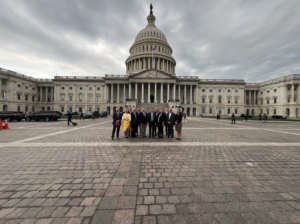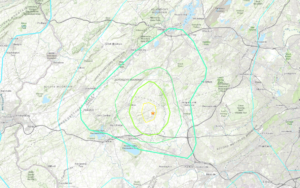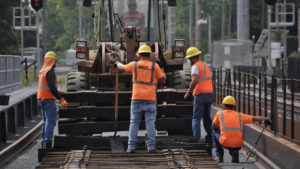Good news for Whitefish, Mont., Railroad District
Written by jroodProperty owners in Whitefish's Railroad District and east of the middle school received good news last week - lab results from 25 soil-borings revealed little or no contamination from underground diesel fuel plumes originating in the BNSF Superfund site, the Whitefish Pilot reports.
Using $50,000 in state
grant money, the city hired Roger Noble and Applied Water Consulting, of
Kalispell, to investigate the extent of the contamination after BNSF began
acquiring properties last spring. Property owners grew increasingly concerned
about declining real estate values and turned to the city for help.
Whitehall-based Enviro
Probe Services was hired to make 18 direct-push soil borings in a three-block
area south of BNSF’s locomotive fueling facility. The Montana Department of
Environmental Quality estimates as much as 110,000 gallons of diesel fuel
remains underground on BNSF property, the result of more than half a century of
spills at the fueling facility.
Another seven borings
were made east of Spokane Avenue – one just north of the library, four between
Kalispell and Columbia avenues and two more northeast of the intersection of
Railway Street and Columbia Avenue. Two underground diesel fuel plumes, east
and west of the depot, were caused by spills during Amtrak refueling
operations.
Noble issued a 64-page
report last week, accompanied by a lengthy volume of tables and laboratory
results. With the exception of two borings that had very low levels of
contaminants, all the borings showed non-detectable levels of contaminants.
"The laboratory results
indicate that contaminant concentrations are well below DEQ risk-based
screening levels," the report concludes. "It is therefore unlikely
that any of the property owners will be required to undertake corrective action
under state regulations.
The boreholes were
drilled outside the BNSF Superfund boundary and sited to provide geographical
coverage. The work took place last November. Two soil samples were taken from
each borehole – above the water table and at the ‘smear" zone – along with
a groundwater sample.
The samples were stored
in ice and shipped to Pace Analytical Laboratory, in Billings. The samples were
analyzed for volatile petroleum hydrocarbons, indicative of gasoline and
solvents, and extractable petroleum hydrocarbons, indicative of diesel fuel.
All soil groundwater
samples showed non-detectable levels of contaminants with the exception of two
boreholes in the Railroad District – on the north side of First Street just east
of O’Brien Avenue and on the west side of Lupfer Avenue midway between First
and Railway streets. Both of those findings were well below the DEQ’s
risk-based screening levels, the report states.
The study also looked at
groundwater flow and soil type. Groundwater flowed south at a low gradient, and
the soil was silty-clay with layers of sand about 6-8 feet below the surface,
where groundwater was predominant.
"These type of
glacial lakebed sediments are typical on the valley floor throughout the Whitefish
area," the report stated.
Meanwhile, cleanup work on
the Whitefish River ordered by the Environmental Protection Agency has halted
for the winter. That work is not conducted as part of the state Superfund
designation but under the federal Oil Pollution Act.





